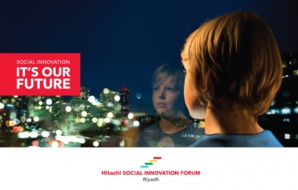Spending a single day of an all expenses paid visit to the Hitachi Data Systems’ conference was enough to change my prevailing mindset on HDS not being considered the most exciting of ventures. In my mind, there occurred a shift from the idea of Hitachi as just a traditional legacy store shop to now being an enlightening developer of innovations looking firmly towards the future.
At this summit, Hitachi had invited a bunch of industry analysts to communicate with Hitachi executives and take a look at the work Hitachi was promoting and cultivating in its core. To my surprise, most analysts on site seemed to be very critical of the business and development model Hitachi was following.
A little background on the company might help shed a bit more light on the way the company operates. Like most Japanese major conglomerates, Hitachi is made up of around 900 subsidiaries, a bewildering arrays of companies spread across a wide range of categories. HDS is a wholly owned subsidiary of its parent Hitachi and exists by the philosophies that somehow are very removed from how most giant companies in America or other countries operate by.
Hitachi in recent years has acquired many companies just to develop their products in a more dedicated manner for a particular sector or field. Hitachi synergizes between its different divisions to add to the value of products in development. This is in stark contrast to US companies who have taken up to splitting up of major companies into smaller dedicated units to increase efficiency like Symantec, HP, eBay etc.
The analysts invited seemed very vocally cynical about Hitachi’s way of doing business especially as this non-Western way wasn’t really a prevalent idea among the more famous Western vendors. The idea of arranging for analysts to attend what is basically a sales show was not particularly the best idea as the two concepts of analyzing and sales pitches are completely at a clash with each other, but still the summit was a great opportunity to see the way this behemoth company handled its operations. One thing that particularly struck out for me was the work culture involved at Hitachi.
Everyone involved in the company from the lowest level of staff to the highest level of executives all considered Hitachi as their family, this concept being completely alien to Western companies. The most impressive thing was how the company fostered loyalty. Most employees at the summit had been with the company for years, something completely unheard of among US vendors. Hitachi was essentially a loyalty driven company operating on traditional Japanese values.
The summit had a very positive effect as it showcased products being displayed across various platforms like automated systems of mining sectors, healthcare solutions for cancer treatments, facial recognition for law enforcement agencies to wearable gadgets. Some questions though could be raised on this wide array of projects Hitachi is involved. As these large arrays offer wide possibilities of permutations and combinations, it’s difficult to know where to start in Hitachi. Even in the expo where a concept of ‘social innovation’ was being pushed forward, very few people knew what it exactly stood for.
Michael Hay, VP and Chief Engineer at Hitachi, explained that the company was a very customer-oriented company, its engineers always looking for the next big idea that consumers might go for. The company seemed very organic in its planning and development of business offerings. Overall Hitachi stood out a copybook example of internal innovation and disruption all in itself.
References:
http://www.forbes.com/sites/benkepes/2015/05/15/hitachi-gives-a-copybook-example-of-innnovating-from-within-foregoes-us-approaches-to-business/
http://www.forbes.com/sites/benkepes/2015/05/15/hitachi-gives-a-copybook-example-of-innnovating-from-within-foregoes-us-approaches-to-business/2/
At this summit, Hitachi had invited a bunch of industry analysts to communicate with Hitachi executives and take a look at the work Hitachi was promoting and cultivating in its core. To my surprise, most analysts on site seemed to be very critical of the business and development model Hitachi was following.
A little background on the company might help shed a bit more light on the way the company operates. Like most Japanese major conglomerates, Hitachi is made up of around 900 subsidiaries, a bewildering arrays of companies spread across a wide range of categories. HDS is a wholly owned subsidiary of its parent Hitachi and exists by the philosophies that somehow are very removed from how most giant companies in America or other countries operate by.
Hitachi in recent years has acquired many companies just to develop their products in a more dedicated manner for a particular sector or field. Hitachi synergizes between its different divisions to add to the value of products in development. This is in stark contrast to US companies who have taken up to splitting up of major companies into smaller dedicated units to increase efficiency like Symantec, HP, eBay etc.
The analysts invited seemed very vocally cynical about Hitachi’s way of doing business especially as this non-Western way wasn’t really a prevalent idea among the more famous Western vendors. The idea of arranging for analysts to attend what is basically a sales show was not particularly the best idea as the two concepts of analyzing and sales pitches are completely at a clash with each other, but still the summit was a great opportunity to see the way this behemoth company handled its operations. One thing that particularly struck out for me was the work culture involved at Hitachi.
Everyone involved in the company from the lowest level of staff to the highest level of executives all considered Hitachi as their family, this concept being completely alien to Western companies. The most impressive thing was how the company fostered loyalty. Most employees at the summit had been with the company for years, something completely unheard of among US vendors. Hitachi was essentially a loyalty driven company operating on traditional Japanese values.
The summit had a very positive effect as it showcased products being displayed across various platforms like automated systems of mining sectors, healthcare solutions for cancer treatments, facial recognition for law enforcement agencies to wearable gadgets. Some questions though could be raised on this wide array of projects Hitachi is involved. As these large arrays offer wide possibilities of permutations and combinations, it’s difficult to know where to start in Hitachi. Even in the expo where a concept of ‘social innovation’ was being pushed forward, very few people knew what it exactly stood for.
Michael Hay, VP and Chief Engineer at Hitachi, explained that the company was a very customer-oriented company, its engineers always looking for the next big idea that consumers might go for. The company seemed very organic in its planning and development of business offerings. Overall Hitachi stood out a copybook example of internal innovation and disruption all in itself.
References:
http://www.forbes.com/sites/benkepes/2015/05/15/hitachi-gives-a-copybook-example-of-innnovating-from-within-foregoes-us-approaches-to-business/
http://www.forbes.com/sites/benkepes/2015/05/15/hitachi-gives-a-copybook-example-of-innnovating-from-within-foregoes-us-approaches-to-business/2/






